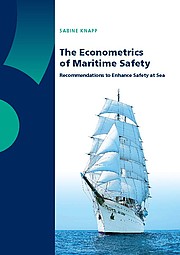The Econometrics of Maritime Safety: Recommendations to Enhance Safety at Sea Defended on Thursday, 25 January 2007
The maritime industry is characterized by a heavy legal framework based on international law with limited legal enforcement possibilities in case of non compliance. This creates loopholes and distortion to competition due to the existence of a market of substandard ships. The lack of trust in the industry has created a playground for inspections on certain ship types including considerable amount of industry driven inspections. This thesis is based on a unique dataset of 183,000 port state control inspections and 11,000 casualties from various sources in order to identify areas for improvement in the safety system, in particular port state control. Two areas of potential improvement have been identified: 1) the targeting of ships for inspections and 2) the inspections and follow up on deficiencies itself. The effect of port state control inspections towards the probability of casualty can be measured for very serious casualties but not for serious and less serious casualties. While key figures on deficiencies and detentions vary accordingly across the regimes, the differences towards the probability of detention is merely reflected by the differences in port states and the treatment of deficiencies and not necessarily by age, size, flag, class or owner. The classic variables such as ship type, age, size, flag, the classification society, deficiencies found in prior inspections and detention are all valid variables for targeting sub-standard ships but flag is only one variable out of many variables that can be used to target sub-standard ships. Targeting on combined inspection and ship particular data including information about change of ownership, class withdrawal, change of class and vetting inspections can further enhance targeting of vessels. The probability of casualty either per seriousness of casualty or casualty first event also revealed three areas of interest - the ISM code, ship and cargo operations and machinery and equipment which are the main areas of improvement possibility that have been identified in order to decrease the probability of a casualty.
Keywords
Maritime Safety, Port State Control, Maritime Casualties, Binary Logistic Regression Application, Ship Target Factors, Ship Risk Profiles, Probability of Detention, Probability of Casualty, Port State Control Frequency, Cost of Inspections, Correspondence Analysis, Measuring Effect of Inspections on Casualties, Improvement Areas for Targeting, Improvement Areas for Inspections, Flag State Performance, Classification Society Performance, Vessel Ownership Performance







